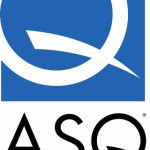- Domeniu: Quality management
- Number of terms: 21751
- Number of blossaries: 0
- Company Profile:
American Society for Quality (ASQ) is a global community of quality management professionals. Established in 1946 as the American Society for Quality Control (ASQC) in response to the need to sustain the many quality-improvement techniques used manufacturing during World War II, the organization ...
Organisatsiooni tegevus, mis mille kohaselt töötajad osalevad regulaarselt teha otsuseid selle kohta, kuidas nende töövaldkonnas tegutsevad soovitused olukorra parandamiseks, planeerimist, eesmärkide seadmine ja jälgimine
Industry:Quality management
Nelja etappi, et liikuda meeskonnad nagu nad arendavad tähtaeg: vormimine, storming, norming ja tulemusi.
Industry:Quality management
Lean tootmine tehnikat, et esitada visuaalseid märke varude taseme määramiseks. Kanban-sarnaselt.
Industry:Quality management
Vahend, mida kasutatakse Six Sigma protsessi täiustamine meeskonnad teha kindlaks kõik asjakohased elemendid (tarnijad, sisendite, protsessi, väljundid, kliendid) protsessi täiustamise projekti enne töö algust.
Industry:Quality management
Võimsus töötajatele antud protsessi peatada, kui ilmnevad kõrvalekalded, võimaldades neil vältida defekt või möödutakse piki varieerumist.
Industry:Quality management
An individual from within or outside an organization who facilitates change in the organization; might be the initiator of the change effort, but not necessarily.
Industry:Quality management
A technique for analyzing what aids or hinders an organization in reaching an objective. An arrow pointing to an objective is drawn down the middle of a piece of paper. The factors that will aid the objective’s achievement, called the driving forces, are listed on the left side of the arrow. The factors that will hinder its achievement, called the restraining forces, are listed on the right side of the arrow.
Industry:Quality management
A term Joseph M. Juran used to describe the Pareto principle, which he first defined in 1950. (The principle was used much earlier in economics and inventory control methods.) The principle suggests most effects come from relatively few causes; that is, 80% of the effects come from 20% of the possible causes. The 20% of the possible causes are referred to as the “vital few;” the remaining causes are referred to as the “useful many.” When Juran first defined this principle, he referred to the remaining causes as the “trivial many,” but realizing that no problems are trivial in quality assurance, he changed it to “useful many.”
Industry:Quality management
உடல் நிலை ஒரு தயாரிப்பு அல்லது செயலாக்க வடிவமைப்பு என்று அவ்வாறே ஒப்பீட்டளவில் நிலையாக, உடன் variation, குறைந்த அளவு போதிலும் இயக்கங்கள் அல்லது பயன்பாடு, சூழல் மற்றும் wear, நிறுவனங்களாகும் காரணிகள் ஆகியவை தொடர்ந்து மாறும்.
Industry:Quality management
அதன் பயன்பாடு தொடர்பான எந்த inherent வேண்டிய imposes ஒரு இயல்பு.
Industry:Quality management
